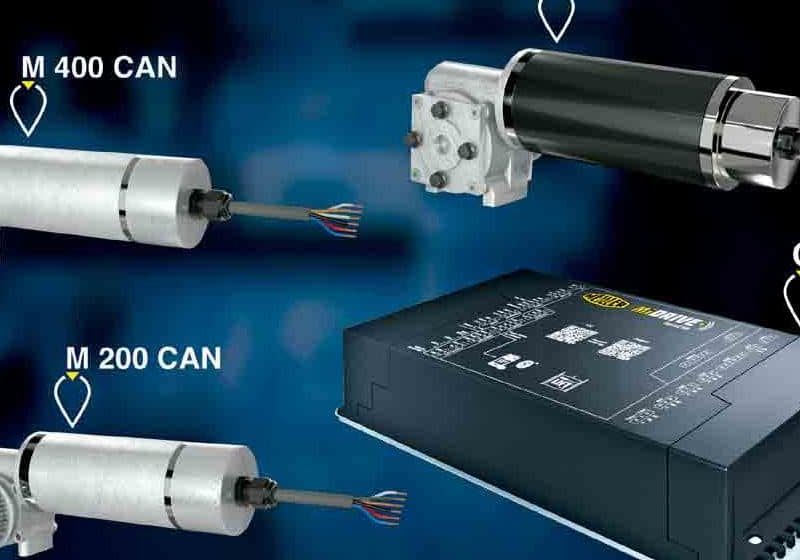How Biodegradable Oils Function in Hydraulic Environments
Jun 1, 2018

Various popular fluids are examined, trouble signs are identified, and solutions are given.
By Mark Kreitzburg and Doug Muennich
The negative environmental effects of using petroleum and other nonbiodegradable lubricants have been uncovered, and the awareness is spreading. For most industries, it is unavoidable and important. However, newly engineered “eco-friendly” biodegradable lubricants have been expertly created as a substitute for use within hydraulic systems. This innovation is not just a trend; in fact, eco-friendly forms of lubrication are becoming a standard in the industrial landscape. Specifically, within the hydraulic elevator industry, there has been a sudden push toward these forms of lubrication.
While biodegradable lubricants are effective, they are not without flaws. With their use becoming as common as traditional petroleum-based lubricants, it is important to understand their compositions, best uses and various weaknesses.
Limitations and Benefits of Eco-Friendly Lubricants
Hydraulic environmental triglyceride (HETG) fluids are water-insoluble oils derived from various animal and vegetable base stocks. HETG fluids are very effective lubricants, but they lack thermal and hydrolytic stability and tend to oxidize rapidly. Fortunately, these fluids can be modified for greater stability and oxidation resistance. The biodegradability and nontoxicity of HETG fluids make them an obvious choice for environmental friendliness. They are readily available in abundance due to their natural properties and offer effective anticorrosion and lubricity, as well as a high viscosity and flashpoint.
HETG fluids have their limitations, including quick aging, rapid oxidation, and extreme thickening and gumming at high temperatures. At low temperatures, they are susceptible to gel and thickening. Temperature that is too high or too low can have major effects on hydraulic-system performance. HETG fluids are miscible (capable of being mixed) with mineral oil, which limits biodegradability. Additionally, HETG fluids are also one of the most expensive biodegradable options.
Hydraulic environmental ester synthetic (HEES) fluids are water-insoluble synthetic esters derived from petroleum or vegetable feedstock. HEES fluids are known for being long-lasting from their ideal fluidity and high thermal and oxidative stability at low temperatures in a wide range of viscosities. Their advantages stop there, however. HEES fluids are expensive and require special system-design requirements to operate properly within a system. They are also miscible with mineral oils like HETG fluids and susceptible to hydrolysis in the presence of water.
Hydraulic environmental poly glycol (HEPG) fluids are water-soluble polyalkylene glycols, polymers made from reacting alkylene-oxide monomers. HEPG fluids are available in a wide range of viscosities and operate at temperatures up to 80°C and down to -20°C. Also, its solubility in water makes it a viable option as an anhydrous (waterless) lubricant. However, HEPG fluids need special design considerations due to their incompatibility with polyurethane seals and the need for motors and pumps to be de-rated with these fluids.
Hydraulic environmental polyalphaolefin and related (HEPR) fluids are water-insoluble polyalphaolefins and related hydrocarbon-based fluids. HEPR fluids have excellent oxidation stability and corrosion protection. Though they are only considered eco-friendly in low viscosity, they offer great lubricity and are long-lasting with good viscosity performance in wide temperature ranges. The disadvantages of HEPR fluids are their costliness and incompatibility with several seal and gasket materials on equipment components.
While the chemical makeup of these four types of biodegradable lubricants are a chemist’s daydream, most of us only need to know how to use them and why. Their compositions are not substitutes for one another, and each have their advantages and disadvantages for use. One is able to select a suitable biodegradable substitute based on the physical makeup of the hydraulic components and operational needs of the equipment involved.
The Insistence of Eco-Friendly
Besides the obvious environmental benefits of biodegradable lubricants, there is a compliance aspect to this shift in the industry. As the government has enacted many regulations to conserve the environment over the past several years, those uncompliant with current and foreseeable regulations face serious monetary and operational consequences. As a result, building owners and architects are jumping on the environmental bandwagon and setting the standard for their hydraulic elevators before a government mandate requires it.
OEMs are making sure to join the environmentally friendly landscape with new equipment technologies. By complying with these environmental regulations in advance and staying within the restraints of current mandates, those that may be heavily affected by future and current government regulations regarding hydraulic elevators can continue to operate unaffected and within compliance.
Symptoms of Biodegradable Fluid Degradation
Regardless of the fluid you choose to use within your hydraulic components, there is a risk of severe degradation. Like petroleum-based products showing symptoms of degradation and wear, biodegradable fluids have a list of red-flag items that point toward the breakdown of composition within hydraulic components. Degradation or varnish can coat your hydraulic systems, causing a wide range of issues and failures. Biodegradable fluids often cause more system problems than traditional petroleum products. With the insistence of eco-friendly fluids, one cannot turn away from biodegradable products to avoid greater degradation.
Instead, by recognizing the following symptoms, one can identify and treat the problem to ensure longevity of a hydraulic system:
- Foul odor: Caused by hydrolysis, a reaction of oil with water that causes the formation of alcohol and acid, this combination is known to create a bad smell when heated, a natural occurrence when the elevator is in use.
- Leveling issues: Occur when the control valves of the elevator stick or seize
- Valve issues: Often caused by strainer clogging and valve sticking
- Leaks: Caused by O-ring and seal failure
Modes of Degradation
Due to their natural limitations, biodegradable products break down over time to form alcohols, acids and varnish within the hydraulic systems. These formations cause performance problems and can eventually lead to total system failure. The best way to describe how degradation occurs in these biodegradable oils is to analyze a diagnostic sample.
Collecting the Varnish Analysis Sample
In the following scenario, there were two fluids defined as being in service in this hydraulic elevator system: HEES (ester-based) and HETG (vegetable-based) hydraulic oils. It is understood that the HEES (ester-based) product was put into the systems after only draining out the HETG (vegetable-based) product. No flush was attempted between the two products.
A handful of samples showing various forms of degradation were collected from multiple elevator units. Each sample pointed to evidence of critical degradation caused by known weaknesses of the HETG (vegetable-based) oils. The unit had a buildup of varnish and sludge in its hydraulic system. A sample of varnish was isolated from a one-year-old HEES fluid system for analysis.
Performing Diagnostic Testing
To diagnose the cause for the varnish, the sample was first washed with a solvent to remove adhered fluid. The prepared varnish sample was then analyzed using a Fourier-transform infrared spectroscopy (FTIR) instrument to identify common contaminants, including those of lubricant degradation.
By comparing the sample with current unit fluid, one can determine that this varnish is made up of HETG (vegetable-based) fluid instead of the HEES (ester-based) fluid, which is in the contaminated system. This would support the evidence of fluid incompatibility.
This example shows how the biodegradable oil degradation can be pinpointed using the FTIR instrument (or other means of varnish testing, such as membrane patch colorimetry testing). The results of these tests can determine the next steps to mitigate the varnish degradation contaminants, improve the unit’s performance exponentially and avoid catastrophic system failures.
Solution for Biodegradable Degradation
Degradation or varnish is one of the leading causes of elevator system failure. In consideration of this, the chances that one will experience some level of degradation with the use of biodegradable products in elevator hydraulic systems are great.
To avoid complete failure, it is vital that elevator maintenance departments invest in the necessary processes to sustain the life of their hydraulic elevators. Depending on the type of fluid used, this process can be tailored to effectively mitigate system contamination. This process works by chemically removing the varnish within the hydraulic system and removing harmful contaminants using specialized engineered varnish-removal technology. The result of this effective solution will be an increase in overall elevator performance, a decrease in the need for costly valve replacements or repairs and the elimination of odor.
Reference
[1] Marougy, Thelma. “Making the Move to Eco-Friendly Hydraulic Fluids,” MachineDesign (www.machinedesign.com/hydraulics/making-move-eco-friendly-hydraulic-fluids).
Get more of Elevator World. Sign up for our free e-newsletter.









